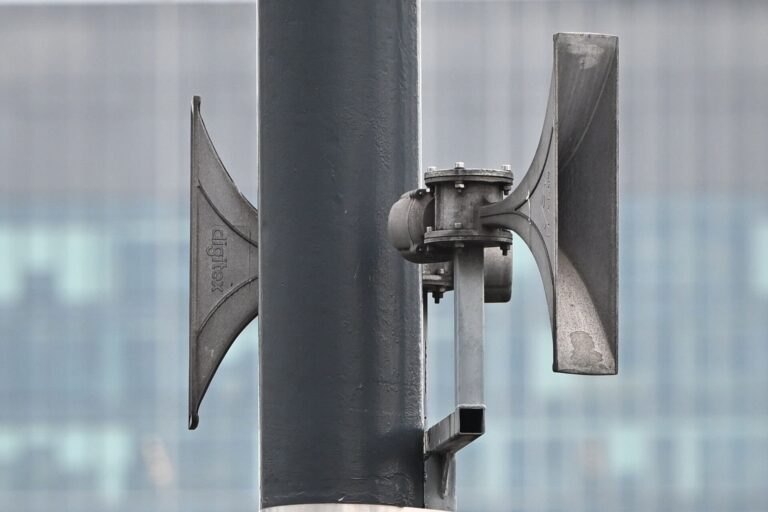Biznes Fakty
„Strict checks” at the borders

In response to the risk of foot-and-mouth disease at the country’s southern border, stringent veterinary inspections have been implemented, as stated by Minister of Agriculture Czesław Siekierski during a session in the Sejm on Wednesday. Veterinary services are present at ten border crossings, equipped with gates and disinfection mats.
– We established regulations for sealing the border prior to the European Commission issuing its implementing decisions. This initiative enabled us to initiate strict border controls in the provinces of Podkarpackie, Opolskie, Śląskie, and Małopolskie – Siekierski remarked in his address concerning the ministry’s preventive measures against the foot-and-mouth disease virus in Poland.
According to the Minister of Agriculture, collaboration among veterinary inspections, border guards, police, and fire brigades has been enhanced.
– Veterinary services are stationed 24/7 at ten crossings, utilizing a system to monitor animal movements. Disinfection gates and mats have been installed – the minister informed the Sejm.
 Monitoring of animal and product transport at the Chyżne-Trstena Polish-Slovak border crossing PAP/Grzegorz Momot
Monitoring of animal and product transport at the Chyżne-Trstena Polish-Slovak border crossing PAP/Grzegorz MomotSurveillance of animals entering Poland
At the beginning of January this year, German veterinary authorities reported the first case of foot-and-mouth disease in 37 years; the infected farm was located approximately 70 km from the Polish border. Last week, the Polish Veterinary Inspectorate confirmed a second outbreak of foot-and-mouth disease in Hungary, near the borders with Austria, the Czech Republic, and Slovakia. On Sunday, Slovak authorities reported the emergence of a fifth outbreak of foot-and-mouth disease in their country. Consequently, the Slovak government has declared a state of emergency nationwide due to the disease.
As per Siekierski’s statements, all animals that have previously entered Poland from Slovakia are undergoing testing and monitoring. – The laboratory in Zduńska Wola operates around the clock, conducting over a thousand tests weekly. In the future, with the establishment of the laboratory in Puławy, our diagnostic capacity will increase to 10,000 tests per week – the Minister of Agriculture announced.
Siekierski noted that on Wednesday, the Ministry of Agriculture and Rural Development received reports of two additional outbreaks of foot-and-mouth disease in Hungary. – Nearly 8,000 animals have been affected in Hungary, and 6,500 in Slovakia – he pointed out. He urged farmers to refrain from seizing so-called market opportunities and purchasing animals and feed at lower prices, as this poses a risk for the introduction of foot-and-mouth disease.
The last occurrence of foot-and-mouth disease in Czechoslovakia was in 1975, while in Poland, which is regarded as free from the disease, it was in 1971.
On Sunday, Minister of Agriculture and Rural Development, Czesław Siekierski, assessed that the threat posed by foot-and-mouth disease is quite serious. He added that the virus spreads easily and through various means. – There is currently no foot-and-mouth disease in Poland. However, the disease is present among our neighbors, which necessitates exceptional vigilance and the complete operation of all border services – Siekierski stated on Sunday.
 Monitoring of animal and product transport at the Chyżne-Trstena Polish-Slovak border crossing PAP/Grzegorz Momot
Monitoring of animal and product transport at the Chyżne-Trstena Polish-Slovak border crossing PAP/Grzegorz MomotRare instances of foot-and-mouth disease in humans
Foot-and-mouth disease is a highly infectious and dangerous viral illness affecting animals. In the event of an outbreak, all animals on affected farms must be culled. The disease also poses a threat to wild animals.
The Ministry of Agriculture and Rural Development stresses that foot-and-mouth disease in humans is rare, and it does not endanger human life. Infection can occur through the consumption of raw milk or direct contact with skin lesions of infected animals, for example, during milking.
The primary symptoms include: painful blisters on the lips, gums, cheeks, and edges of the tongue, and less commonly on the skin of the hands, feet, face, and conjunctiva. These symptoms may be accompanied by general signs such as fever, headache, fatigue, difficulty swallowing, or drooling. „Typically, self-resolution occurs, with complete recovery taking place after 1-2 weeks,” the Ministry of Agriculture and Rural Development indicated.



